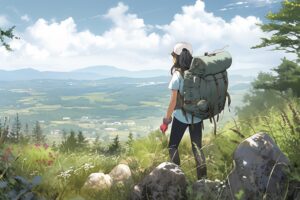EXPLORING CALIFORNIA’S DESERT

Welcome to the breathtaking world of California’s desert landscapes! From the mystical Mojave Desert to the enchanting Joshua Tree National Park, the Golden State offers an array of unique experiences for intrepid travelers. To make the most of your desert adventure, we’ve put together a comprehensive guide filled with essential travel tips and insights.

Embrace the Diversity of California’s Desert
California’s desert region isn’t just one homogenous landscape. It’s a fascinating tapestry of diverse ecosystems, and each one has its own distinct charm. Here are a few must-visit destinations:
1. Joshua Tree National Park
Known for its otherworldly rock formations and iconic Joshua Trees, this national park is a mecca for rock climbers and stargazers alike. The stark, alien-like landscapes will transport you to another world.
2. Death Valley National Park
Famous for being the hottest and driest national park in the United States, Death Valley boasts unique geological formations, such as Badwater Basin and Zabriskie Point. Don’t forget to visit during the cooler months.
3. Mojave National Preserve
The Mojave Desert is a stark, surreal place, and the preserve showcases the best of it. Visit Kelso Dunes for a truly epic sand dune experience.
4. Anza-Borrego Desert State Park
California’s largest state park is a wildflower paradise in the spring and an excellent stargazing spot year-round. It’s a wonderful place for hiking and camping.
Planning Your Desert Adventure
1. Timing is Crucial
The desert can be unforgiving, especially in the summer months when temperatures soar to extreme levels. The best time to explore California’s deserts is during the fall, winter, or early spring, when the weather is milder and the wildflowers are in full bloom.
2. Sun Protection is Essential
Sunscreen, sunglasses, and a wide-brimmed hat are your best friends in the desert. The sun can be harsh, and protection from UV rays is a must.
3. Hydration is Key
Staying hydrated is non-negotiable in the desert. Carry more water than you think you’ll need, especially if you plan to hike or spend extended periods outdoors.
4. Respect the Environment
While exploring the desert, remember that these are delicate ecosystems. Stay on marked trails, pack out all your trash, and avoid disturbing wildlife. Leave no trace.
Stargazing and Night Photography
California’s desert areas are renowned for their incredibly clear night skies. Make the most of your visit by indulging in some stargazing or night photography. Remember to:
- Bring a telescope or binoculars for a closer look at celestial wonders.
- Plan your trip around the phases of the moon for optimal stargazing conditions.
- Check if there are any local astronomy clubs or guided stargazing tours.
Exploring the Desert’s Flora and Fauna
California’s deserts are not barren; they’re teeming with life. Keep an eye out for unique desert plants like creosote bushes and yucca trees. Birdwatchers will also find a variety of desert-dwelling species.
Adventure Sports
For those seeking an adrenaline rush, California’s deserts offer opportunities for off-roading, rock climbing, and even hot air ballooning. However, be sure to follow safety guidelines and respect the environment.
Accommodation Options
California’s desert destinations offer a range of accommodation options, from rustic campgrounds to luxurious resorts. Book your stay in advance, especially if you plan to visit during the busy season.
CONCLUSION
Exploring California’s deserts is a journey into a world of stark beauty, fascinating geology, and unparalleled stargazing. With the right preparation and a sense of adventure, you can experience the magic of these landscapes while preserving their fragile ecosystems. So, pack your bags, grab your camera, and get ready for an unforgettable adventure in the Golden State.
Exploring Americas – TOP WILDLIFE VIEWING DESTINATIONS IN U.S.
FAQs
1. When is the best time to explore California’s deserts?
- The best time to visit is during the fall, winter, or early spring to avoid extreme heat. This is when the weather is milder and wildflowers are in full bloom.
2. What should I pack for a desert trip?
- Essential items include sunscreen, sunglasses, a wide-brimmed hat, and extra water for hydration. Sturdy hiking shoes are also recommended.
3. How can I minimize my impact on the desert environment?
- Respect the environment by staying on marked trails, packing out all trash, and avoiding disturbing wildlife. Adhere to the principles of “Leave No Trace.”
4. What kind of wildlife can I expect to see in California’s deserts?
- California’s deserts are home to a variety of wildlife, including bighorn sheep and unique desert plant species. Observe them from a safe distance, and do not feed or disturb them.
5. Are adventure sports available in the desert areas?
- Yes, you can enjoy off-roading, rock climbing, and even hot air ballooning in some locations. Always follow safety guidelines and respect the environment.
6. How should I plan my accommodation in the desert areas?
- Accommodation options vary from rustic campgrounds to luxurious resorts. It’s advisable to book your stay in advance, especially during peak seasons.
7. Are there entrance fees to the desert parks?
- Some desert parks may have entrance fees or camping fees. Check the specific park’s website for current fee information and park operating hours.
8. Is cell phone reception available in these remote areas?
- Cell phone reception can be limited in some desert locations, so it’s a good idea to be prepared for spotty or no coverage. Plan accordingly for communication needs.
9. Can I collect rocks or plants in these desert parks?
- No, collecting rocks, plants, or any natural resources in these parks is prohibited. It’s essential to respect and protect the fragile desert ecosystem. Leave no trace of your visit.







